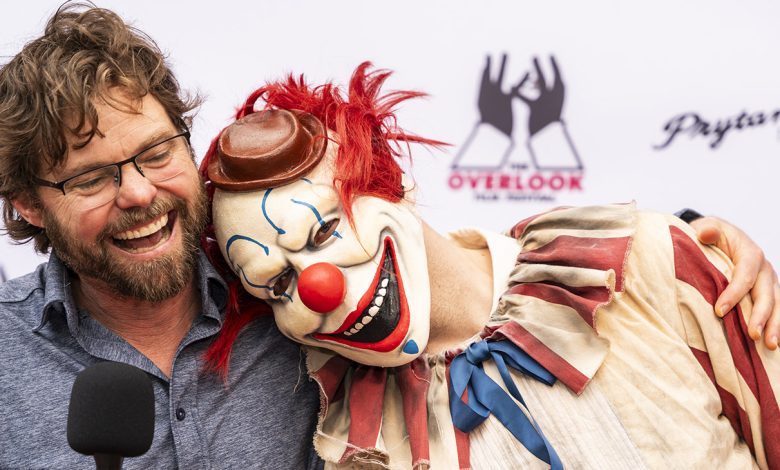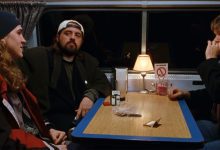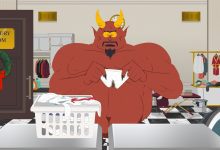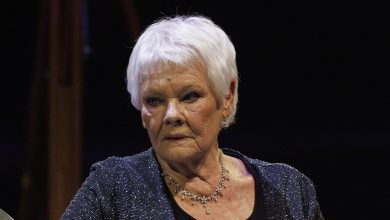Clown in a Cornfield Director Eli Craig Talks the Uphill Battle

Clown in a Cornfield director Eli Craig insists it’s just as difficult to make a horror-comedy in 2025 as it was in 2010. That’s when he made his feature directorial debut with the cult hit Tucker & Dale vs. Evil, a horror-comedy that hilariously chronicles two hillbillies who are wrongfully treated like serial killers by a group of vacationing college kids. Earlier this year, The Monkey filmmaker Oz Perkins also lamented the ongoing struggle of making horror-comedies to The Hollywood Reporter, as he had to detach his latest film from a major studio and go the indie route to get it made within his ideal subgenre.
Craig has tried to knock some sense into executives around town, but it’s been a futile effort.
اRelated Posts:
“I got Tucker & Dale made, and now it’s this cult classic that’s lived on. It’s also why I haven’t gotten to work a ton in this business. I’ve tried to play more in the horror-comedy genre than most, and it’s been a real struggle,” Craig tells The Hollywood Reporter in support of Clown in a Cornfield’s May 9 theatrical release. “A comedy-forward horror-comedy movie is extremely hard for the business in Hollywood to get behind. I will point to examples where it really works, like Zombieland, and they will resist, resist, resist. It’s a mentality you can’t break through.”
In the case of Clown in a Cornfield, Craig did have some momentum on his side courtesy of the killer clown revival that probably began with Andy Muschietti’s It movies and continued with Todd Phillips’ Joker. Then came the unlikely indie success story of Damien Leone’s Terrifier 2 and Terrifier 3. On top of that wave, Craig had Temple Hill Entertainment in his corner after they were fresh off the success of producing Parker Finn’s Smile.
Ultimately, Craig and co. were able to independently finance Clown in a Cornfield exclusively through foreign sales, but that doesn’t mean they were now living on easy street.
“It was right toward the end [of production that we ran out of money]. Departments had completely lost their budget and weren’t getting any more,” Craig says. “Our production design department had to sift through a junkyard to find our production design. The last day of the shoot was by the bonfire, and all of that was put together from the junkyard.”
Based on Adam Cesare’s ongoing book series of the same name, the well-received Clown in a Cornfield centers on Quinn Maybrook’s (Katie Douglas) recent move to Kettle Springs, Missouri with her widower father, Dr. Maybrook (Aaron Abrams). Teenage Quinn quickly befriends the town’s most notorious group of teens, before a killer clown named Frendo — modeled after the mascot for the town’s recently incinerated corn syrup factory — begins knocking them off one by one.
Below, during a recent conversation with THR, Craig, who happens to be Sally Field’s middle son, also discusses Clown’s relevant theme of generational divide, as well as the tug of war between practical effects and visual effects.
***
You’re the second Craig I’ve interviewed in the last couple months. Looking back, are you able to recognize how you gravitated toward the horror genre and Peter leaned more toward the crime genre?
Some of it is just random, but looking back, we express ourselves so much in our work. It happens more than you even consciously intend to. There’s a lot of joy and comedy in my horror. I really like to play with genres, so I don’t really consider myself a straight-horror director. But Peter was always such a deep thinker, and I was always the more playful guy. Somehow, that comes out in our work, except Peter has gravitated more toward these big action films. Oh man, you’re making me compare myself with my brother already. (Laughs.)
Sally Field recently joined her son Eli Craig at a friends and family screening of his new film Clown in a Cornfield. RLJE Films, Shudder and January Images
I’m so sorry! Clown in a Cornfield was already in motion before Adam Cesare’s source material was even released. At what stage did you enter into the mix?
The book was out [once I came on board]. I bought it and read it right away. It had already had some success, but the success of that book keeps being discovered. It’s really exciting. They’ve done a reprint now and a movie tie-in, so it’s all over airport bookstores and everything.
Temple Hill, our producers, had been developing it for a bit, and I got brought on initially as a director. They said, “What do you want to do with it?” And I said, “I want to embrace the absurdity and bring in more comedy/action and follow the character arcs more.” So they loved what I had to say, and they brought me in to do my pass on the script, my rewrite on it.
The financing then came through foreign sales alone, so we independently financed this. We shot it in Winnipeg, Manitoba. I’m Canadian; I live in Vancouver, so it’s a little bit more affordable to shoot movies in Canada. To me, this was no different than Tucker & Dale vs. Evil as far as how gritty and resourceful and low budget it was.
I spoke with Oz Perkins earlier this year about The Monkey, and he said that the major studios are all wary of making horror-comedy. He actually had to take The Monkey to an indie house because a major didn’t embrace the subgenre. As someone who made his name with a cult horror-comedy (Tucker & Dale vs. Evil), do you also find that there’s a resistance to the subgenre these days?
Well, it’s not just these days. I made Tucker & Dale in 2010 by the skin of my teeth. It was the hardest thing to get made, and nobody wanted to make it. But I got Tucker & Dale made, and now it’s this cult classic that’s lived on. It’s also why I haven’t gotten to work a ton in this business. I’ve always been asked to write somebody else’s comedy script or fix somebody else’s movie. But I’ve tried to play more in the horror-comedy genre than most, and it’s been a real struggle.
In some ways, I’ve learned my lessons from it, and I consider Clown in a Cornfield to be a horror-action film with elements of comedy that I like to do. But a comedy-forward horror-comedy movie is extremely hard for the business in Hollywood to get behind. I will point to examples where it really works, like Zombieland, and they will resist, resist, resist. It’s a mentality you can’t break through.
Eli Craig’s Clown in a Cornfield Courtesy of RLJE Films & Shudder
Do you think the recent success of the It and Terrifier franchises made financiers more confident in the prospects of this movie?
A little bit. Terrifier 3 wasn’t out yet when we were getting financing. In fact, our film was basically done when Terrifier 3 played at [Fantastic Fest 2024]. So it was one of those things where I was like, “Wow, I’m really in the middle of the zeitgeist right now, and I didn’t even know it.” I did look at It really closely, and this is such a different film than that. Frendo is so different from both [It’s] Pennywise and [Terrifier’s] Art. If it was a different mask, nobody would compare them. But since it’s a clown mask, people compare those two things. But it really is such a different film than those two, and I don’t think that had a lot to do with the financing.
It was more Tucker & Dale and the guys at Temple Hill. They had just released Smile, and it had been a massive success. So we were able to turn that success into indie financing, but again, this is very much an indie film with a very, very small budget. We then brought on the distributor [RLJE and Shudder] after we made the film.
Apparently, you ran out of money during production. Did you have to crawl to the finish line?
Yeah, it was right toward the end. Departments had completely lost their budget and weren’t getting any more. Our production design department had to sift through a junkyard to find our production design. The last day of the shoot was by the bonfire, and all of that was put together from the junkyard. So it takes a lot of resourcefulness from your crew, and any director that takes a lot of credit for a low-budget film really owes it to their crew for being resourceful and smart about how to utilize the small amount of resources they have.
As you touched on earlier, the clown design is everything to a movie like this. Did you guys go through countless possibilities until you landed on Frendo the Clown’s look?
We did. The hardest casting was figuring out Frendo. We had quite an interesting place to start with Frendo’s backstory. He was the mascot of the Baypen Corn Syrup Factory. He was the brand salesman, like Ronald McDonald was to McDonald’s. In the ‘30s and ‘40s, there were all these clowns trying to sell things, and then there was Krinkles the Clown trying to sell cereal [in the ‘50s]. If you look up these guys, they’re horrifying for us to look at now, and it’s amazing that kids were ever buying anything from these scary guys.
We looked at old Lon Chaney pictures of him dressed like a clown, and we tried to bring in some of that old Americana feel into the sales vibe. But we also knew we had to make it horrific, so it’s as if time has aged Frendo in a very disfiguring way. It’s made him go from the optimistic America of the ‘40s and ‘50s to this dreadful, demented version of him today.
Eli Craig’s Clown in a Cornfield Courtesy of RLJE Films & Shudder
There’s a double whammy of macro and micro twists within close succession of each other. One is global, and the other is more character-driven. I’m assuming the global one was in the book, but was the second one yours since you tend to play with misjudgment and misunderstanding between characters?
Both of the big twists in the film were built into the book. For me, it was just about how to reveal them in the most surprising or useful way. There’s a big twist about Frendo and who Frendo is, and it starts to reveal itself around the midpoint. It then carries through to the third act where we get a lot more information. There’s also a twist about some of these characters that also happens just after that midpoint.
So, because the information from the book was there, it gave me the ability to figure out how to place it in the right place and how to put the camera in the right place. The goal was for the audience to realize what’s happening at the same time that the characters in the movie realize what’s happening.
Yeah, the second twist felt so much like Tucker & Dale and the realizations that characters have after misjudging people. It made the movie for me.
Oh cool. Thanks for saying that. The first time I really saw the timing of that was at South by Southwest with an audience of 1200 people. I never got to test this movie or anything, and the first audience I saw it with was at South By. So it was quite fun to see the timing of things and how my expectations for people’s realization of story points played out in reality with an audience. So I was really quite pleased to see some of those expectations land right on. That’s exciting as a filmmaker.
Overall, the film is about generational divide, and while every generation probably says this, it feels like there’s never been a greater distance between generations than there is now. Do you think it’s even possible to bridge that gap?
I’m not sure without battle and without some clown chasing people through a cornfield and the absurdity of that. To me, so much of what’s happening today is absurd, and so why not use theater of the absurd to define it? The generation that has possibly betrayed the younger generation more than any other in humanity is the baby boomers and what they’re leaving Gen Z. We’re all so distracted right now from some of the biggest concerns in human history, like global climate change, and we just seem to be doing nothing. But there’s all kinds of differences and concerns, and I would say the older generation just seems to not care so much about what they’re leaving the younger generation. So there’s a lot of rage from that, and rightfully so.
The generational difference that I play with in this movie is that one group really wants the world to stay the same, and the other group wants it to be a little more forward thinking and progressive. So it comes to a really bloody clash, but by no means is this a message movie. It’s giving you what’s [already] out there and showing the absurdity of it all.
Eli Craig’s Clown in a Cornfield Courtesy of RLJE Films & Shudder
What are the economics of practical effects versus visual effects these days? Is practical more expensive as is often said?
No, the reason why people say that [practical is more expensive] is because practical effects can go wrong on set and really set back your day. They can possibly ruin your day if things go very wrong. So much in production is built around making your day, especially when you don’t have as many days as you need. So as a filmmaker who loves practical effects, I’m constantly fighting for the budget to go toward production and to give me as many days as I can possibly get because practical effects play better. A lot of times, producers would rather just get the movie in the can and then fix it in post, but a lot of things don’t work as well when they’re fixed in post. There’s a safety valve in trying to shoot more visual effects, and the producers feel like they have more control [that way].
Part of the fun of filmmaking and watching a film is surprise. Practical effects mean that you can be genuinely surprised with how something comes out, and it’s surprising for the better, sometimes. Tucker & Dale is a perfect example. When the girl stands up and gets soaked in blood from the wood chipper, I didn’t know that much blood would shoot out. And it was so funny when it happened that I thought, “This is the shot. We’re definitely keeping this.” So there’s some amazing movie magic that comes from special effects, and while it’s a little less predictable, I think it should be embraced more.
Katie Douglas as Quinn Maybrook in Eli Craig’s Clown in a Cornfield. Courtesy of RLJE Films & Shudder
If the demand is there, do you think a Clown in a Cornfield sequel would also follow the subsequent books?
We have a lot of books to play with; Adam Cesare has written three Clown in a Cornfield books, and now he’s writing the fourth. We want to follow the general path of the book, but also focus on Quinn [Katie Douglas], our final girl. In some ways, I think of the Scream series’ following of Sydney Prescott and how it embraced the character arc of somebody that goes through this trauma. So I just want to make sure that any sequels we do would really focus on the survival of Quinn Maybrook and what her character is going through after experiencing this stuff.
***
Clown in a Cornfield opens in theaters on May 9.
Source: Hollywoodreporter
HiCelebNews online magazine publishes interesting content every day in the movies section of the entertainment category. Follow us to read the latest news.
Related Posts
- Streaming Ratings: ‘The Pitt’ Hits High Mark With Season Finale
- Former Model Kaja Sokola Testifies Against Harvey Weinstein For Alleged Assault When She Was 19
- With Jury Nearly Finalized, Sean “Diddy” Combs’ Prosecutors Say They May Have Lost Key Witness
- Sam Morelos (left) and Chloe Fineman adulthood.
Disney/Brett Roedel
…
- Blake Shelton admits fears as he discusses ‘ups and downs’ in his life





